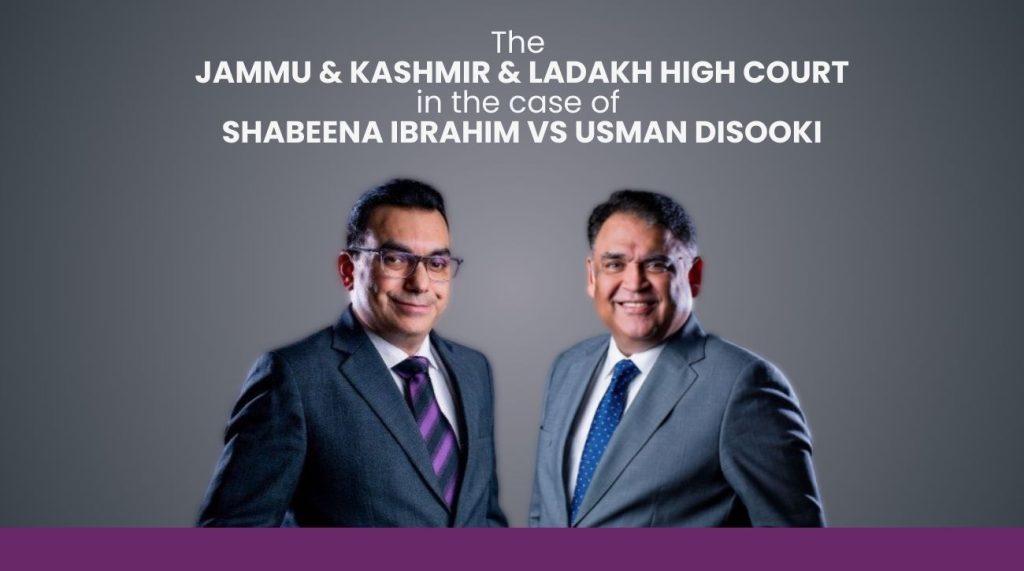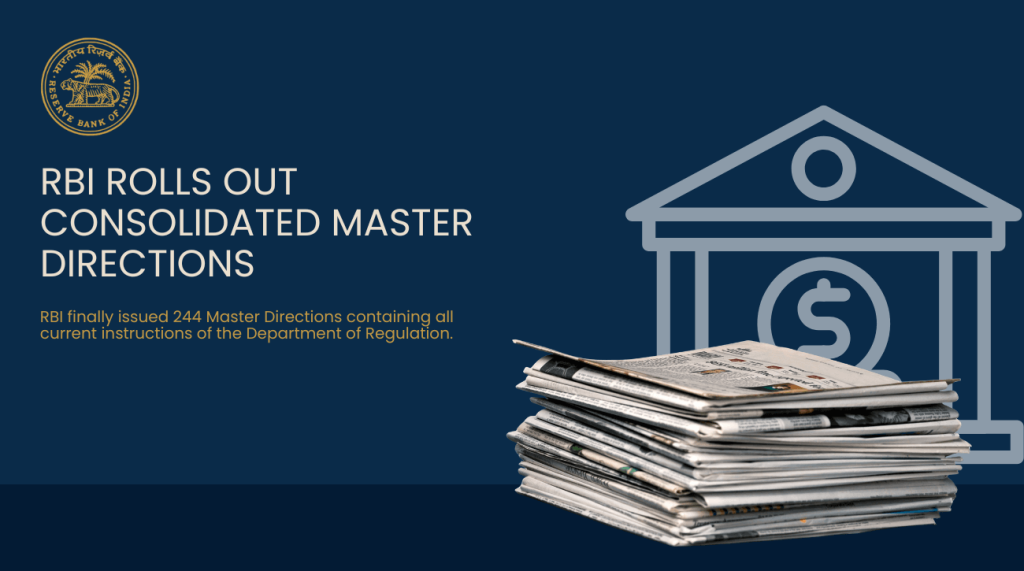Legal Updates (Dec 15 – Dec 20, 2025)
CASE UPDATES:
The exclusion provided under the Riots Strike, Malicious and Damage (RSMD) clause would not oust the insurer’s liability when the loss or damage is attributable to the peril of fire, which has its own independent exclusions
The Supreme Court in the case of Cement Corporation of India vs ICICI Lombard General Insurance Company [Civil Appeal No. 2052 of 2016] has ruled that if the damage is caused by fire, then the reason why the fire took place becomes irrelevant. When there was a fire, and something was on fire that ought not to be on fire, and the wilful act of the insured did not cause such a fire, then loss attributable to fire would be covered under the insurance policy.
The Court clarified that the exclusions in the insurance contract must be read strictly. Therefore, the exclusion provided under the Riots Strike, Malicious and Damage (RSMD) clause would not oust the insurer’s liability when the loss or damage is attributable to the peril of fire, which has its own independent exclusions.
In the present case, the Court found that the fire occurred at the factory of the Cement Corporation of India (appellant), resulting in a significant loss due to the transformer being set ablaze, and the fire could not be controlled for approximately 6 hours. The Court also noted that on the intervening night, some miscreants entered the factory and committed burglary.
Since the FIR reported that the flames were coming out of the transformer, and at no stage was any defence taken that the insured caused the fire, the Court opined that the loss caused to the appellant was due to fire only, and the incident of theft/ burglary merely preceded the incident of fire.
The Court observed that the policy indemnifies the insured against damage by any of the specified perils. Under the specified peril of ‘Fire’, the exclusions are limited to damage caused by its own fermentation, natural heating, spontaneous combustion, or burning by order of a Public Authority. However, burglary and theft are not included in the exclusions under the specified peril ‘Fire’.
The Court also observed that once it is established that the loss is caused by fire, the cause that ignited the fire becomes immaterial. The insurer cannot refuse to indemnify the damage caused by a specified peril (fire) on the ground that the proximate cause was an event excluded under a different clause (RSMD), especially when no such exclusion is provided in the specified peril ‘Fire’ itself.
The Court, therefore, concluded that there was no justification for ICICI Lombard to repudiate the claim and that the NCDRC had erred in rejecting it. Accordingly, the Court set aside the repudiation letter and the NCDRC judgment, and remanded the matter to the NCDRC for the assessment of the loss, to be decided within six months.
Click here to read/ download the original judgment
In respect of a borrower having more than one facility with a bank, upon classification of one account as a non-performing asset, all the facilities granted by the bank will have to be treated as NPA and not the particular facility or part thereof which has become irregular
The NCLT Kolkata in the case of Central Bank of India vs SA Plywood Industry Private Limited [CP (IB)/174(KB)2024] dated November 24, 2025, has, relied on the RBI norms, to hold that NPA classification is borrower-wise and not facility-wise, and that once any credit facility of a borrower is declared NPA, all facilities extended by the bank must be treated as NPA for insolvency proceedings.
The Tribunal observed that the treatment of accounts, non-performing assets, is borrower-wise and not facility-wise. In respect of a borrower having more than one facility with a bank, upon classification of one account as a non-performing asset, all the facilities granted by the bank will have to be treated as NPA and not the particular facility or part thereof which has become irregular.
The Tribunal held that once any account of a borrower becomes NPA, all facilities granted to that borrower automatically assume NPA status, and that the corporate debtor cannot segregate loan facilities to avoid insolvency. Concluding that debt and default had been established, the Tribunal admitted the application, declared a moratorium, appointed the Interim Resolution Professional, and directed the bank to deposit Rs 3 lakh towards initial costs of the CIRP.
The Residents Welfare Association, which is not authorised by individual homebuyers, cannot initiate a corporate insolvency process on their behalf, particularly when those homebuyers do not individually meet the minimum debt threshold under the IBC
The NCLT New Delhi in the case of Heritage Max Condominium Association v. Dreamhouse Infrastructure Pvt Ltd. [CP(IB)465 (ND) of 2025] dated December 09, 2025, has held that a Residents Welfare Association that is not authorised by individual homebuyers cannot initiate a corporate insolvency process on their behalf, particularly when those homebuyers do not individually meet the minimum debt threshold under the Insolvency and Bankruptcy Code (IBC).
The Tribunal observed that the IBC requires strict compliance with both the statutory debt threshold and the standing of the applicant when invoking Section 9-CIRP. It noted that the application had not been filed by individual operational creditors or an authorised representative acting on their behalf, but by the Association in its own name. It further noted that the individual Applicant, in their personal capacity, does not meet the minimum threshold requirement prescribed under Section 4 of the IBC for initiation of proceedings against the Corporate Debtor.
The Tribunal observed that the statutory scheme of the Code mandates strict compliance with the threshold criteria, and in the absence of such compliance, the petition cannot be sustained. It found that although the Association sought to pursue a collective claim, the underlying debts belonged to individual homebuyers who did not, on their own, satisfy the statutory minimum.
Hence, it concluded that the Heritage Max Condominium Association could not maintain the CIRP plea against Dreamhome Infrastructure Private Limited, the developer of the project, for the alleged non-transfer and diversion of the Interest Free Maintenance Security corpus.
The right to a speedy trial is an inseparable facet of Article 21 of the Constitution. Unduly long deprivation of liberty pending trial of bank fraud case and siphoning off money to shell entities, strikes at the heart of Article 21, and pre-trial incarceration cannot be allowed to degenerate into punishment without adjudication
Reaffirming the principle that “bail is the rule and jail is an exception”, which stems from the presumption of innocence, and that the process should not become the punishment, the Supreme Court in the case of Kapil Wadhawan vs Central Bureau of Investigation [SLP (CRL) NO. 16953 OF 2025], has ruled that the right to a speedy trial is an inseparable facet of Article 21 of the Constitution. Unduly long deprivation of liberty pending trial strikes at the heart of Article 21, and pre-trial incarceration cannot be allowed to degenerate into punishment without adjudication.
Referring to Section 479 of the BNSS (which is formerly 436-A of the CrPC, the Court clarified that this section carves out an additional ground for an accused to seek bail and cannot be construed as a positive mandate to keep individuals incarcerated until the trial is complete, especially in cases with a maximum punishment of life imprisonment.
The Court explained that Section 479 of the BNSS has come into force to de-clog the prisons in India, which are generally plagued by the issue of overcrowding. It is a trite law that any provision involving liberty has to be construed as per the touchstone of personal liberty of a citizen, who cannot be put behind bars for a long time without following the procedure established by law.
The provision of Section 479 is to be read in addition to the provisions relating to the grant of bail under Section 481, 480 of the BNSS, which essentially carve out additional grounds for an accused seeking bail, who is incarcerated for a substantial period of time as an undertrial. Thus, the Court pointed out that those who have served one-half of the maximum sentence or one-third if he/she is a first-time offender, can apply to the Court for bail under this provision.
This provision also mandates a positive obligation on the Superintendent of Jail to seek bail, on behalf of the under-trial, if they satisfy the condition under subsection (1) of 479 of BNSS. Such a provision cannot be interpreted to suggest that it’s a mandate under law to not release under-trial prisoners unless they complete one-half or one-third of their sentence, as the case may be. Such an interpretation would create havoc in the jails and create a great burden on the prison system in India, emphasised the Court.
The Court observed that the accused, having been charged with offences having a maximum punishment of life imprisonment, cannot claim benefit under Section 479 of BNSS. However, it cannot be construed as a positive mandate to keep them incarcerated till the completion of the trial.
Coming to the facts of the case, the Court found that the appellant was made an accused on account of non-payment of loan and credit facility availed from a consortium of 17 Banks and divesting of the money in 81 shell companies. The Court also admitted that, based on documentary evidence, all the accused persons connected with these companies, except the appellants, have been granted bail. Further, a total of 11 cases have been registered against the appellant, and in all other cases, the appellants have been released on bail.
At the same time, the Court found that the chargesheet filed by the CBI is voluminous in nature, containing more than 4 lakh pages and having 736 witnesses. In addition, the proceedings against the assets have already been taken up by the NCLT, and the CIRP is in progress. However, pending trial, the charges have not yet been framed by the Court.
Therefore, finding that the conclusion of the trial is not possible in the near future, that the case is solely based on documentary evidence, all other accused persons connected with the companies have been granted bail; and that the appellants have already been released on bail in all 10 other related cases, the Court without expressing any opinion on the merits of the case, deemed it appropriate to release the appellants on bail, subject to the caveat that the appellants shall furnish a personal bond of Rs. 10 lacs, surrender their passports, and not influence the witnesses.
The cornerstone for invoking the SARFAESI Act is the creation of a “security interest” in favour of a “secured creditor”. As the Borrower/ Defaulter had not mortgaged its property to the Corporation, no security interest is created within the meaning of the SARFAESI Act
The Supreme Court in the case of North Eastern Development Finance Corporation vs L. Doulo Builders and Suppliers [Civil Appeal No. 6492 of 2024], had ruled that the cornerstone for invoking the SARFAESI Act is the creation of a “security interest” in favour of a “secured creditor”. Finding that the Borrower/ Defaulter had mortgaged its property to the Council, not to the Corporation, the Court clarified that the Corporation’s only recourse was the deed of guarantee provided by the Council.
As no property was mortgaged by the Defaulter Company in favour of the Corporation, no security interest was created within the meaning of the SARFAESI Act, and therefore, the Court held that the Corporation was not a “secured creditor”.
Since there is no security agreement in the present case by which a security interest has been created in favour of a secured creditor, the Court held that the SARFAESI Act was erroneously invoked by the North Eastern Development Finance Corporation, and hence, there is no question of relegating the Defaulter Company to the Debt Recovery Tribunal under Section 17 of the SARFAESI Act.
The Court observed that Article 371A of the Constitution contains special provisions for Nagaland, stating that no Act of Parliament concerning “ownership and transfer of land and its resources” shall apply to the State unless the Nagaland Legislative Assembly so decides by a resolution. Further, the SARFAESI Act was formally implemented in Nagaland only with effect from 10th December 2021, through a notification. Since the recovery actions were initiated long before this date, the invocation of the SARFEASI Act was premature and invalid.
Accordingly, the Court concluded that the High Court was correct in interdicting the Corporation’s actions as being without jurisdiction. Thus, the appeal was dismissed, leaving the Corporation free to pursue other legal remedies against the Company or the Council in accordance with the law.
Please click here to read/ download the original judgment
A successful resolution applicant whose resolution plan was scrapped after the Committee of Creditors opted for liquidation cannot claim interest on his performance bank guarantee if the Letter of Intent and the Request for Resolution Plan issued by the Resolution Professional do not provide for it
The NCLAT Chennai in the case of Kences Constructions Private Limited, Madala Srinivasu, Anita Madala vs. Ashish Vyas [Company Appeal (AT) (CH) (Ins) No. 554/2025] dated November 19, 2025, has held that a successful resolution applicant (SRA) whose resolution plan was scrapped after the Committee of Creditors opted for liquidation, cannot claim interest on his performance bank guarantee if the Letter of Intent and the Request for Resolution Plan issued by the Resolution Professional does not provide for it.
The Tribunal observed that the Letter of Intent operates as a binding contract governing both parties and dismissed an appeal filed by the SRA of Maan Sarovar Properties Development Pvt Ltd against an order of the NCLT Chennai. As far as the payment of interest on the Performance Bank Guarantee (PBG) is concerned, the Tribunal observed that it would be subject to the condition that the clause as enshrined in the terms of the Letter of Intent itself, or RFRP document, which is the basis of furnishing a claim or refund of the Performance Bank Guarantee (PBG).
The Tribunal also observed that the interest cannot be a self-created fiction, which the Appellant could claim as a right by applying for withdrawal of PBG. The Appellant would be under the contracting laws, bound by the terms of the Letter of interest as well as the RFRP document, which has been the basis for laying down the governing terms and conditions leading to the issuance of the Letter of Intent, which has been accepted by the Appellant and is bounded by it and the Appellant now cannot resile from it.
The Tribunal therefore concluded that under any contractual obligations or when an inter se relationship is governed by the two contracting parties, their rights and liabilities are exclusively and strictly governed by the terms and conditions contained in it, and they cannot claim more or anything beyond what has been agreed and settled between the parties under the terms of the contract.
Having promised a particular rate of interest upon which the investor agreed to invest money by creating FDRs, the bank cannot later, upon maturity, deny the agreed/promised rate of interest
The Allahabad High Court in the case of Nem Kumar Jain vs Union of India [WRIT – C No. – 21627 of 2023] dated November 17, 2025, has ruled that the principle of promissory estoppel is absolutely attracted in the realm of contract, and having promised a particular rate of interest upon which the investor agreed to invest money by creating FDRs, the bank cannot later, upon maturity, deny the agreed/promised rate of interest.
The Court pointed out that the reduction of the contracted interest rates on the petitioner’s FDRs was neither authorised by law nor supported by any regulatory or circular provisions, and negated the reliance on RBI circulars, calling it misplaced, as those directions relate only to the grant of additional interest and do not empower the bank to alter previously agreed contractual terms.
The Court observed that the bank has not alleged any fraud, misrepresentation, or irregularity on the part of the petitioners (investors) while opening the FDRs. The higher rate of interest was offered at the time of issuance, and the subsequent reduction was the result of a unilateral decision by the bank officials. Thus, the petitioners cannot be made to suffer for any error or oversight by the bank in offering a higher rate of interest. The Court noted that the issuance of the FDRs with a clearly stated and higher rate of interest constituted an express term of the contract by the respondent bank, based on which the petitioners had acted and allowed their deposits to remain with the bank for the full tenure.
The Court found that the petitioners were issued Fixed Deposit Receipts (FDRs) with contracted rates of interest of 10.75% and 10.25% as applicable. After years, the respondent bank, suo-moto, reduced the interest rates on these FDRs, while quoting bank and RBI circulars regarding additional interest payable to bank staff, retired staff, and senior citizens. Thus, from a careful perusal of these circulars and regulatory provisions, the Court found that they are entirely enabling in nature, governing only the discretionary grant of additional interest to eligible categories of depositors and prescribing the eligibility conditions for such benefits. Nowhere do these provisions authorise retrospective reduction or revision of the rate of interest already contracted in FDRs already issued.
Accordingly, the Court directed the banks to compute and pay the interest on the petitioner’s FDRs at the originally contracted rates of interest as mentioned on each FDR, from the respective dates of maturity of the FDRs.
Merely making payments or issuing cheques on behalf of another entity does not create contractual liability in the absence of privity. Thus, a company cannot be pushed into insolvency merely for issuing cheques on behalf of another entity, in the absence of a direct contractual relationship with the creditor
The NCLAT New Delhi in the case of Satish Kumar Narula v. M/s. Healthians Research Centre Pvt Ltd. [Company Appeal (AT) (Insolvency) No. 1517 of 2024] dated December 12, 2025, has held that a company cannot be pushed into insolvency merely for issuing cheques on behalf of another entity, in the absence of a direct contractual relationship with the creditor.
The Tribunal held that when there is no privity of contract between the Corporate Debtor and the Operational Creditor, it cannot be said that the Corporate Debtor had taken over the liability of the Trust/Hospital in any manner. When the Corporate Debtor has merely issued some cheques on behalf of the Trust, the legal remedy for dishonour of cheques has already been resorted to by the Operational Creditor.
The Tribunal observed that both Nayati and Healthians had independent and separate contracts with the hospital trust and that there was no direct agreement between them, as Nayati was neither an agent of the trust nor authorised to transfer or sub-grant management of hospital services. Thus, it concluded that merely making payments or issuing cheques on behalf of another entity does not create contractual liability in the absence of privity.
Since no services were provided by Healthians to Nayati, the Tribunal held that the claim did not qualify as an operational debt under the Insolvency and Bankruptcy Code. On this basis, the NCLAT set aside the NCLT’s order admitting the company into insolvency.
Non-compliance with the RBI guidelines by an NBFC cannot defeat the classification of a loan as a financial debt under Section 7 of the IBC
The NCLAT, New Delhi, in the case of Sinki Commodities Pvt Ltd vs. ABC Floors Pvt Ltd [Company Appeal (AT) (Insolvency) No. 783 of 2022] dated October 14, 2025, has held that a Non-Banking Financial Company’s (NBFC) failure to comply with Reserve Bank of India (RBI) guidelines cannot deprive a transaction of its status as a ‘financial debt’ under Section 5(8) of the Insolvency and Bankruptcy Code (IBC), 2016, or prevent the filing of an application under Section 7 of the IBC.
The NCLAT observed that the real nature of the transaction and the time value of money must determine whether a financial debt exists, irrespective of procedural breaches of RBI circulars. The Tribunal noted the disbursement of Rs. 1.6 crores, and the payment of interest at 8% per annum, after referring to the borrower’s own letters confirming receipt of funds, the TDS Form 16A showing deduction of interest, and the confirmation of accounts reflecting loan interest entries.
The NCLAT reiterated that for a debt to qualify as a financial debt, it must involve commercial borrowing and the time value of money. The absence of a formal written agreement could not outweigh the evidence proving such a transaction. The Tribunal clarified that while RBI guidelines are statutory and binding, a breach of such directions cannot alter the legal character of a debt that otherwise satisfies the definition of financial debt under Section 5(8) of the IBC.
The NCLAT emphasised that the IBC is a special legislation, and the existence of financial debt must be determined independently of the RBI’s procedural framework. Thus, the substance of the transaction, and not merely the presence of formal documents, determines whether a debt is financial in nature. As Sinki Commodities had successfully established the existence of a financial debt and default by the corporate debtor, the Tribunal quashed the NCLT’s order and directed ABC Floors Pvt Ltd. to repay Rs. 1.6 crores along with 8% interest per annum within three months, and to submit proof of payment before the NCLT.
A Civil Suit or Anticipatory Bail application proceedings, which have been filed after the filing of the Section 9 IBC application, cannot be used to defeat a validly filed Section 9 application on grounds of a pre-existing dispute
The NCLAT New Delhi, in the case of Yusuf Malubhaiwala vs. Anuj Maheshwari, Insolvency Resolution Professional of Steelexpert Industries Ltd [Company Appeal(AT) No. 916 of 2025] dated December 10, 2025, has held that civil proceedings or anticipatory bail applications filed after a Section 9 CIRP plea cannot be used to claim a pre-existing dispute or block the admission of a valid insolvency petition. The Tribunal agreed with the NCLT’s findings that “the suit was filed after the Section 9 application and did not qualify as a pre-existing dispute, and the anticipatory bail proceedings had been initiated post the Section 8 Demand Notice”.
Thus, the Tribunal observed that a Civil Suit or Anticipatory Bail application proceedings which have been filed after filing of the Section 9 application cannot be used to defeat a validly filed Section 9 application on grounds of a pre-existing dispute. The Tribunal held that the Corporate Debtor’s defence lacked credibility. The alleged cash receipts were never referred to in the statutory reply to the Section 8 demand notice, nor mentioned in any police complaint, civil proceeding or bail application, and were raised only after initiation of insolvency proceedings.
The Tribunal also observed that the police complaints contained contradictory monetary figures and did not relate to goods supplied, invoices or contractual terms. None of the material relied on by the Corporate Debtor satisfied the requirement of a genuine, bona fide dispute that existed before the statutory notice. Therefore, the Tribunal concluded that the invoices, delivery challans and supporting records placed by the Creditor clearly established supply and default, and that there was no pre-existing dispute capable of defeating the CIRP application.
Penalties imposed by the Securities and Exchange Board of India (SEBI) after the commencement of liquidation cannot be admitted as claims under the IBC if such a claim had not arisen or crystallised on the liquidation commencement date
The NCLAT New Delhi in the case of Securities and Exchange Board of India v. Rajiv Bajaj, Liquidator M/s Annies Apparel Pvt Ltd. [Company Appeal (AT) (Insolvency) No. 1421 of 2024] dated December 12, 2025, has held that penalties imposed by the Securities and Exchange Board of India (SEBI) after the commencement of liquidation cannot be admitted as claims under the Insolvency and Bankruptcy Code, 2016.
The Tribunal observed that the claim had not arisen or crystallised on the liquidation commencement date, and hence, there was no infirmity in the decision of the Liquidator in not admitting the claim of the SEBI arising out of the order, which had been passed after the liquidation commencement date.
The Tribunal observed that Regulation 12(2)(a) of the Liquidation Process Regulations requires stakeholders to submit or update their claims strictly as of the liquidation commencement date, while Regulation 13 mandates verification and estimation of liabilities as they exist on that date. Thus, the regulatory framework does not contemplate the admission or estimation of liabilities arising after the liquidation commencement date.
The Tribunal reiterated that claims arising after the liquidation commencement date are inadmissible, while clarifying that the issue in the present case is not the enforcement of an assessment order passed after the liquidation commencement date, but whether a claim arising after such date can be entertained by the Liquidator.
REGULATORY UPDATES:
SEBI has mandated periodic disclosure requirements – The Trustee of a special purpose distinct entity shall submit the disclosures, on a half-yearly basis, to the SEBI and on the stock exchange where the Securitised Debt Instruments (SDIs) are listed, within 30 days from the end of March or September
The Securities and Exchange Board of India (SEBI) vide its Circular No. HO/17/11/18(1)2025-DDHS-POD1/I/342/2025 dated December 16, 2025, has mandated periodic disclosure requirements for Securitised Debt Instruments (SDIs) in terms of Regulation 11B of the SEBI (Issue and Listing of Securitised Debt Instruments and Security Receipts) Regulations, 2008.
The Circular requires trustees of special purpose distinct entities to submit specified disclosures on a half-yearly basis to SEBI and to the stock exchanges where the SDIs are listed. These disclosures must be filed within 30 days from the end of March and September each year.
Separate disclosure formats have been prescribed for SDIs backed by loans, listed debt securities or credit facility exposures, and for SDIs backed by other types of exposures, as detailed in Annexures I and II. Illustrative guidance on the computation of weighted average maturity, weighted average rating and average default rate is provided in Annexure III.
The circular will be effective from March 31, 2026, and has been issued to protect investor interests and strengthen the regulation of the securitised debt market.
Click here to read/ download the original circular
SEBI has modified the conditions specified for the reduction in denomination of debt securities – Issuer shall be eligible to issue a debt security at a reduced face value, which may be either an interest-bearing or zero interest-bearing security
The Securities and Exchange Board of India (SEBI) vide its Circular No. HO/17/11/24(1)2025-DDHS-POD1/I/491/2025 dated December 18, 2025, has modified the conditions specified for the reduction in denomination of debt securities. Earlier, SEBI, vide Circular No. SEBI/HO/DDHS/DDHS-PoD-1/P/CIR/2024/94 dated July 03, 2024, has provided for a reduction in denomination of debt securities and non-convertible redeemable preference shares subject to certain conditions.
The said erstwhile circular provided for a reduced face value of Rs. Ten Thousand for debt security or non-convertible redeemable preference share without any structured obligation, subject to a condition that the securities shall be interest/dividend bearing. However, this stipulation excludes those debt securities that carry a zero coupon.
The market participants have expressed that zero-coupon bearing debt securities are instruments that do not carry periodic interest, but are generally issued at a discount and redeemed at par, and the investors realise returns through the difference between the discounted issue price and the face value received at maturity.
The SEBI found that the said structure effectively resulted in compounded returns, as the investment grows over time without interim payouts. Such a structure makes these instruments attractive to investors looking to diversify their portfolios. Accordingly, the Board partly modified Clause 1.3 of Chapter V of the NCS Master circular dated October 15, 2025, and after the amendment, the issuer shall be eligible to issue debt security at a reduced face value, which may be either an interest-bearing or zero interest bearing security.
The provisions of this circular shall apply to all issues of debt securities, on a private placement basis, that are proposed to be listed from the date of issuance of this circular.
Click here to read/ download the original circular
SEBI has amended SECC Regulations, 2018 – Application for appointment of Executive Directors (EDs) shall be through open advertisement in all editions of at least one national daily, and before the completion of the term of the existing ED, the Market Infrastructure Institutions (MIIs) shall forward the names to SEBI at least two months before the last working day of the existing ED
The Securities and Exchange Board of India (SEBI) vide its Circular No. HO/47/12/11(5)2025-MRD-POD3/I/196/2025 dated December 12, 2025, has strengthened the governance of Market Infrastructure Institutions (MIIs), including Stock Exchanges, Clearing Corporations, and Depositories.
The Circular amends the SECC Regulations, 2018 and D&P Regulations, 2018, regarding the appointment, roles, and responsibilities of Managing Directors (MDs), Executive Directors (EDs), Chief Technology Officers (CTOs), Chief Information Security Officers (CISOs), Chief Risk Officers (CROs), and Compliance Officers (COs).
The key provisions include appointment of EDs through open advertisement, reporting structures of EDs to MDs, quarterly performance evaluations, and modified reporting lines for KMPs. EDs will report to Governing Boards quarterly and may escalate matters to SEBI. Technology audits will be handled by CROs, who will also attend relevant committee meetings.
MIIs must implement these changes, amend byelaws if required, and disseminate the information publicly. The circular, effective from December 20, 2025, aims to enhance accountability, transparency, and investor protection in the securities market.
Click here to read/ download the original circular
SEBI has eased the KYC process for the existing NRIs – The requirement for clients to be physically located in India during digital re-KYC has been relaxed
The Securities and Exchange Board of India (SEBI) vide its Circular No. HO/38/30/12(1)2025-MIRSD-SEC-FATF dated December 10, 2025, has introduced a significant relaxation in the KYC process for Non-Resident Indians (NRIs). Recognising stakeholder concerns over accessibility, SEBI has modified the Master Circular on KYC dated October 12, 2023, to ease the re-KYC process for existing NRI clients.
Specifically, the requirement for clients to be physically located in India during digital re-KYC has been relaxed. Intermediaries must ensure digital verification apps incorporate features such as random action prompts, time-stamping, geo-location verification, and IP address anti-spoofing measures.
The GPS coordinates captured must match the country of the client’s address proof, ensuring authenticity without the need for physical presence in India. This amendment aims to streamline compliance for NRIs while maintaining due diligence and fraud prevention.
Click here to read/ download the original circular













